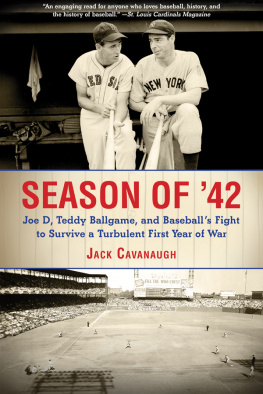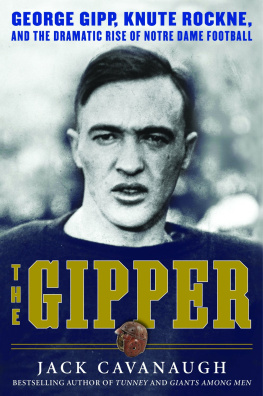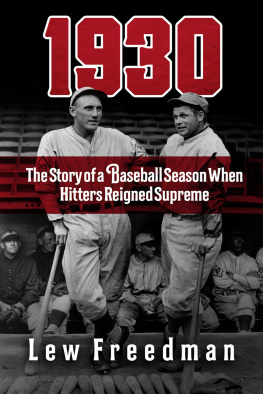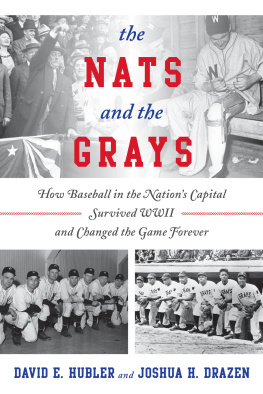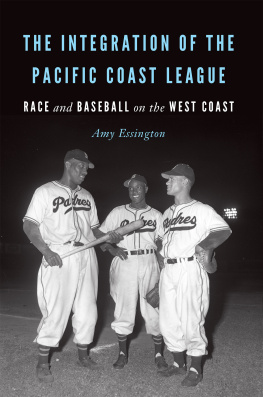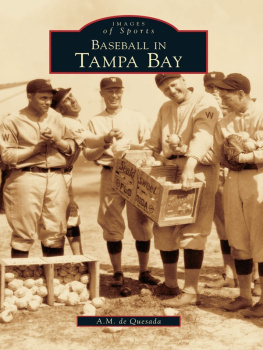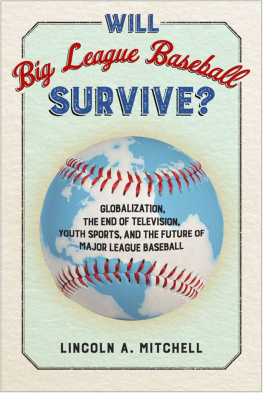Also by Jack Cavanaugh:
Damn the Disabilities
Tunney
Giants Among Men
The Gipper
Mr. Inside and Mr. Outside
For my two favorite ballplayers, Rogan and Tanner Wells, and for their younger brother and an up-and-coming prospect, Rylan Wells.
Copyright 2014 by Jack Cavanaugh
All Rights Reserved. No part of this book may be reproduced in any manner without the express written consent of the publisher, except in the case of brief excerpts in critical reviews or articles. All inquiries should be addressed to Skyhorse Publishing, 307 West 36 th Street, 11 th Floor, New York, NY 10018.
Skyhorse Publishing books may be purchased in bulk at special discounts for sales promotion, corporate gifts, fund-raising, or educational purposes. Special editions can also be created to specifications. For details, contact the Special Sales Department, Skyhorse Publishing, 307 West 36 th Street, 11 th Floor, New York, NY 10018 or .
Skyhorse and Skyhorse Publishing are registered trademarks of Skyhorse Publishing, Inc., a Delaware corporation.
Visit our website at www.skyhorsepublishing.com.
10 9 8 7 6 5 4 3 2
Library of Congress Cataloging-in-Publication Data is available on file.
ISBN: 978-1-61321-768-9
Printed in the United States of America
CONTENTS
I honestly feel that it would be best for the country to keep baseball going.
President Franklin Delano Roosevelt in his green-light letter to Baseball Commissioner Kenesaw Mountain Landis, who had asked the president in January 1942 whether he thought major league baseball should continue during World War II.
INTRODUCTION
B IG LEAGUE BASEBALL would seem to have been a hard sell in 1942. World War II was not going well for the United States in the Pacific, the Atlantic, North Africa, or Europe. Close to home, unescorted ships were being sunk at an alarming rate after being torpedoed and in some cases blown up by German submarines, some of them within sight of East Coast beachgoers, with the loss of thousands of lives. Even though it had seemed inevitable that the United States eventually would be drawn into the war, the countrys armed forces were woefully and inexplicably ill-equipped with insufficient planes, ships, submarines, tanks, torpedoes, bombs, and almost every aspect of weaponry and ammunition.
Since early 1941, the country had been sending ships, planes, tanks, and other materials to England, Russia, China, and France under a so-called lend-lease program, which had been authorized by Congress and eventually would cost $50 billion. During the previous year, the United States had loaned about fifty World War I-era destroyers to Britain, which was already at war, and to Canada after President Franklin Delano Roosevelt had proclaimed that the United States was prepared to be an arsenal of democracy to countries that eventually would become its allies. Roosevelt, along with many of his closest advisers, felt that the more the United States helped its friends who were already at war, the more it could both act as a deterrent to Germany and make it less likely that America would be drawn into the war, although deep down he felt that involvement was virtually inevitable, Roosevelt also felt that the longer the United States stayed out of the war, the more time it would have to prepare for war. Meanwhile, by 1941, the United States had quadrupled its defense budget even before the attack on Pearl Harbor despite considerable isolationist opposition, both in Congress and to a lesser extent by an America First movement determined to keep the United States out of war, which Roosevelt and other realists knew was quixotic. Warships, many of them from World War I, were in short supply in early 1942 after much of the Pacific fleet had been destroyed at Pearl Harbor, and many more would be sunk in naval engagements between May and December. Moreover, it wouldnt be until late 1943 before some of the aircraft carriers, battleships, cruisers, destroyers, and other ships that had been sunk on December 7 and in 1942 would be replaced. But even granting the devastation at Pearl Harbor, the question arises as to why the United States was not better prepared on December 7, 1941. Most of the blame for the carnage and devastation at Pearl Harbor was pinned on Admiral Husband Kimmel, commander in chief of the Pacific Fleet, and General Walter Short, his army counterpart, who like Kimmel was headquartered on Hawaii. Both were accused of dereliction of duty and fired. Kimmel and Short were certainly at least partially to blame for logistical and training failuresKimmel in part for having most of the Pacific Fleet anchored or docked in port, where the ships were virtually sitting ducks for Japanese torpedo bombers, and Short for ordering that all aircraft be moved out of hangars onto air strips at Hickam, Wheeler, and Bellows Army air fields in Honolulu, ostensibly to protect them from sabotage, but leaving them out in the open and easy targets for Japanese attack planes. In Kimmels defense, he had pleaded for more aircraftlong-range B-17 bombers and PBYs, flying boats used both as patrol planes and bombersfor defensive and patrol purposes, but almost all the B-17s built were being sent to Britain, and the PBYs were in short supply. Its also very likely that miscommunication was at least partially responsible for the inadequate defense and late response to the Japanese attack at Pearl Harbor. Apparently at least some of the intelligence about Japanese intentions to launch air strikes in the Pacific that was being picked up by American code breakers in Washington was never relayed to Kimmel and Short, the eventual scapegoats for the December 7 attack who, unfairly or not, took the fall for the disaster at Pearl Harbor. That the Japanese attacked was not surprising. It was expected after President Franklin D. Roosevelt ordered an embargo on shipments of oilJapan produced very little oilaircraft parts, and scrap metal to Japan and had all Japanese assets in the United States frozen after Japan refused to get out of China, which it had invaded in 1937, and Indochina (Laos, Cambodia, and Thailand, which were French possessions) and to renounce its pact with Germany and Italy. But if indeed the Japanese were to attackeven while Japanese emissaries were meeting with U.S. officials in Washingtonthe targets were expected to be in the central Pacific, most likely in the Philippines, and not at much more distant Pearl Harbor. While American cryptographers had broken the Japanese diplomatic code, it had not been able to break Japans naval code. Thus the United States could not determine the Japanese Navys intentions in the Pacific.

Even months after the Japanese attack on Pearl Harbor, manpower was in very short supply, and Uncle Sam needed men, millions of them, including those from twenty-one through thirty-five years of age who had been ordered to register for the draft, the age range of most big-league baseball players. As 1942 progressed, the United States also needed women in the newly formed womens military services, as civilian pilots, and to work in shipyards and defense plants. During the winter of 42, fears of a Japanese invasion of the West Coast rose after the shelling in January of an oil field in Santa Barbara, California, by a Japanese submarine. Then in June, German saboteurs landed on beaches on Long Island and the east coast of Florida, demonstrating that submarines could come undetected within a few hundred feet of American shores. To say the least, the United States was in a crisis mode, and the coming baseball season not only seemed unimportant but appeared to be in jeopardy.

